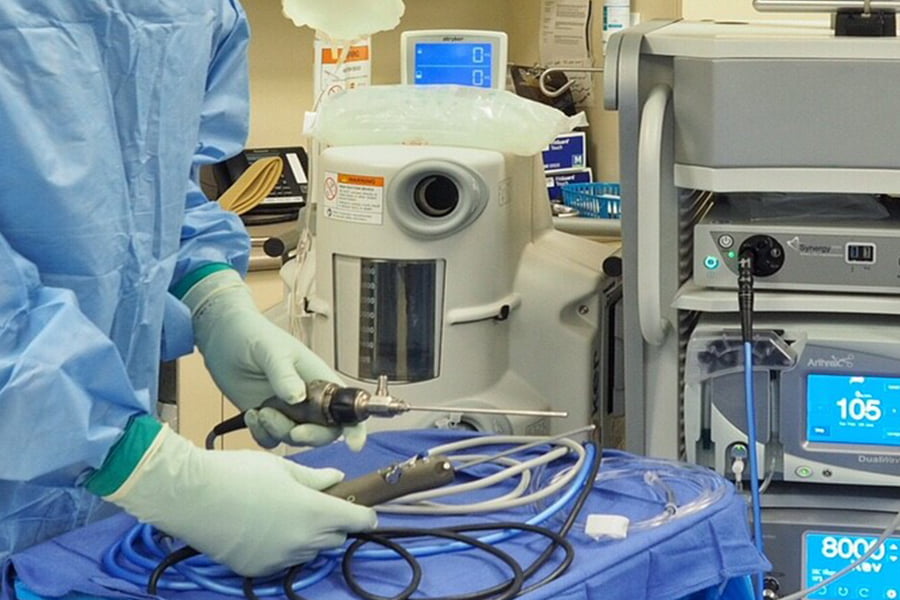
The ligamentum teres has a very important job. It helps hold the head of the femur (thigh bone) in the hip socket. If you pull a chicken leg out of its socket, you’ll see a fibrous white ligament. That’s the equivalent of the ligamentum teres in the human.
Traumatic or twisting injuries can cause this ligament to tear. Hip dislocation can stretch it to the tearing point, too.
Doctors don’t have a test to help them find this type of tear in the ligamentum teres. It doesn’t show up in MRIs, X-rays or CT scans. The patient’s symptoms, such as deep groin pain and repetitive mechanical symptoms such as popping, catching, locking, or “giving way” of the hip are the only signs that an injury to the ligamentum teres has occurred.
Arthroscopic surgery and the ligamentum teres
It wasn’t until arthroscopic surgery came along that doctors even knew that ligamentum teres injuries occur as often as they do. One study found that approximately 15% of hip surgery patients had also experienced a ligamentum teres injury.
During arthroscopic surgery, doctors insert a special tool called an arthroscope into the joint. A tiny TV camera on the end of the arthroscope gives the surgeon a view inside the hip joint. Special shaving and suction tools can also go through the scope into the joint. Because the scope can enter the joint from several different places, it gives the surgeon access to hard to reach areas. Positioning of the hip to facilitate arthroscopic surgery enhances the surgeon’s view into the joint.
Removing inflamed tissue, and trimming and tightening the ligament stabilizes the hip.
If you are experiencing any of the symptoms described above, call the Zehr Center for Orthopaedics at 239-596-0100 for an appointment.
For more information on this subject, call The Zehr Center for Orthopaedics at 239-596-0100 or visit www.zehrcenter.com. The information contained herein is compiled from a variety of sources. It may not be complete or timely. It does not cover all diseases, physical conditions, ailments, or treatments. The information should NOT be used in place of a visit with your healthcare provider, nor should you disregard the advice of your health care provider because of any information you read on this topic.